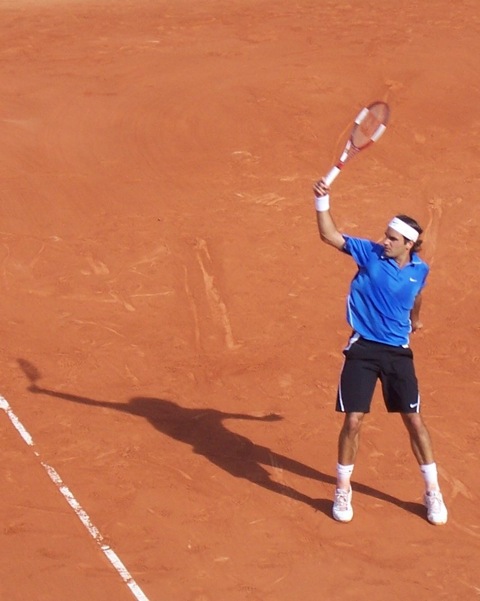An Athlete’s Guide to Dealing with a Tough Loss: Five Steps to Handling Disappointment

Imagine this … you are playing in front of 200 spectators, grinding it out on the hard courts under the hot sun. The first set you’ve won 7-5. Then, in a tight second set, you narrowly lose 6-7 and that was after holding two match points! You are now in the third set tie-breaker and the score is 5-6. Your opponent hits a let court which trickles over the net. You hear an echo in your head … game, set, match. It’s another disappointing loss, 7-5, 6-7, 6-7. But this one hurts even more as you had two match points in the second set and opportunities to break in the third. Slowly, you walk up to the net and shake your opponent’s hand. Your hand feels limp and your body feels like the energy has been sucked out by a vacuum. Your legs are wobbly and your eyes are glazed over. You simply cannot believe what has happened.
So what’s a player to do? How can you get over this disappointment? Your parents and friends tell you it’s nothing, and to just move on. You’ll do better next time, they say. Don’t you just hate that phrase?! However, still covered in sweat and feeling partially paralyzed, you hear them but can barely say anything. You feel as if you have lockjaw, unable to mutter a word. In your mind, you are still replaying the points that you feel you should have won, holding onto the advantages with dear life.
So let me repeat … what’s a player to do? How do you cope with the disappointment? How do you bounce back from such painful defeat? First off, let’s acknowledge, it’s not easy and it hurts! However, at some point, when the pain starts lessening, anywhere from a few hours to a day or so, it becomes imperative to view the match through another lens. That is, how do you begin to pick the pieces up? And what must you do next time to get better?
How will you take advantage of certain situations and continually put yourself in a position to get over the hump? The following are five steps to help you, the broken player, experience and move past a disappointing performance. Equally so, this list is great for parents, coaches and friends as they try to support the player during the process of disappointment, release and rebounding.
1. You have the right to be disappointed
You’ve earned the right to be disappointed. Let’s face it, after putting it all on the line, competing with all your heart, it is practically impossible to put on a smiling face and just forget things after a close loss. Give yourself some time. Disappointment is a natural emotion, it even hurts, and that’s okay too. It’s not something that needs to be fixed. It is time that usually heals the disappointment.
2. One step closer
Believe it or not, you are actually one step closer to your goals! The great Babe Ruth used to say every time he struck out, “I’m one step closer to hitting a home run!” Babe would learn from being up at bat, and change his strategies every time he stepped up to the plate. You can do the same. It took Rafael Nadal two years to gain the number one ranking. Each time he lost during this period, he wondered how he could improve and do better the next time out. It’s obvious that he learned a lot after beating Federer on grass and hard courts. Don’t forget, slumps fit in here too. It may look like you’re going nowhere, even backwards, but keep on plugging away and learning. Maybe the competition is getting stronger or the match-up is not as favorable. That slump may be a major learning curve that just needs to be ridden out, much like a wave. And just beyond the wave is smooth sailing … just hang on.
3. Failure provides feedback
If you listen, you become aware. Failures, setbacks and obstacles always throw us for a loop, but it’s the true champion who can readjust and glean valuable feedback. Feedback should be viewed without judgment and as a learning opportunity in which you can make changes and adapt, adjusting to the situation next time. Think about it … was there ever a great champion, individual or team, that didn’t learn from failures, setbacks and obstacles? All great champions know why they are competing and use this big “Why” to get themselves back on track. How long did fans judge Federer during his early days? They said he was all hype. He used failure as feedback en route to his rise.
4. Reframe it!
Simply stated, after you have decompressed, ask yourself the basic questions. What’s another way to look at this loss or situation? How can I find something positive from it? What’s the lesson here? Even though you lost, what can you learn? And don’t forget, at some point; give yourself some credit for showing up and putting yourself on the line. How many others are competing with such a heart as yours?
5. Focus on the process, not the outcome
This is probably one of the most important points and a major one that all other points can probably be folded into. While you lost this performance, it is another step toward your ultimate goal. The match gave you valuable experience and exposed you to the situational pressure of match play. This is highly valuable and cannot be duplicated in practice. Remember, all great champions have to pay their dues and earn their experience. There was a time when people were saying Rafael Nadal would be the best number two player in the history of the game. Now, people are saying this guy may win more Grand Slams than Roger Federer.






